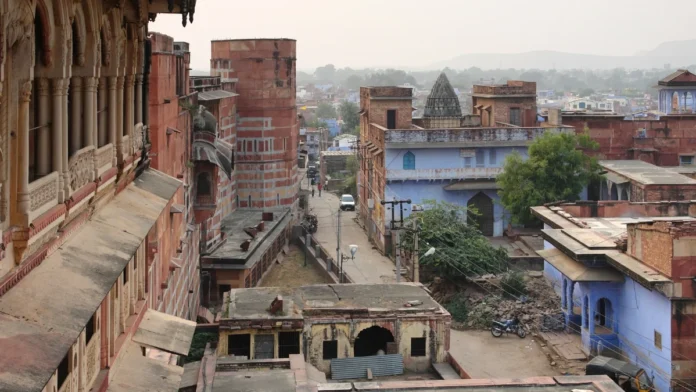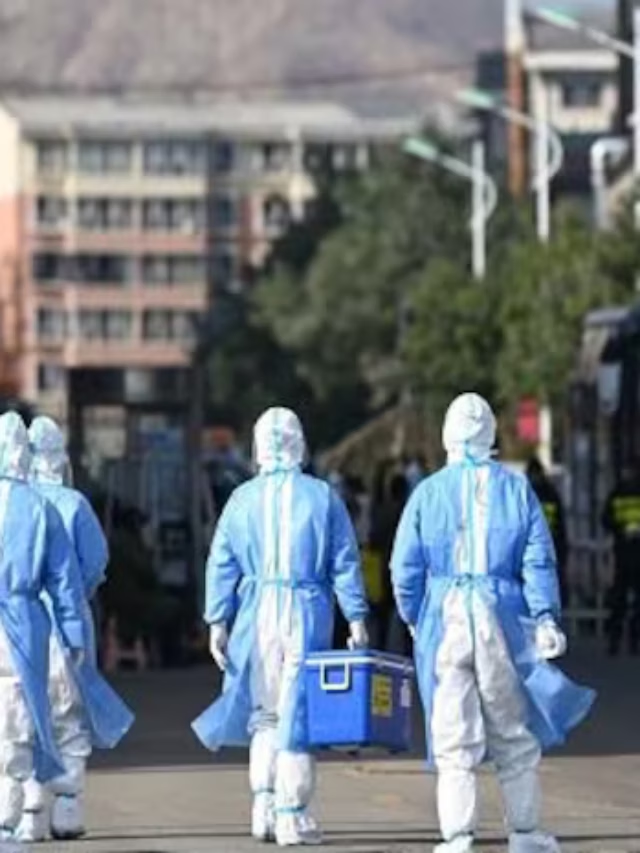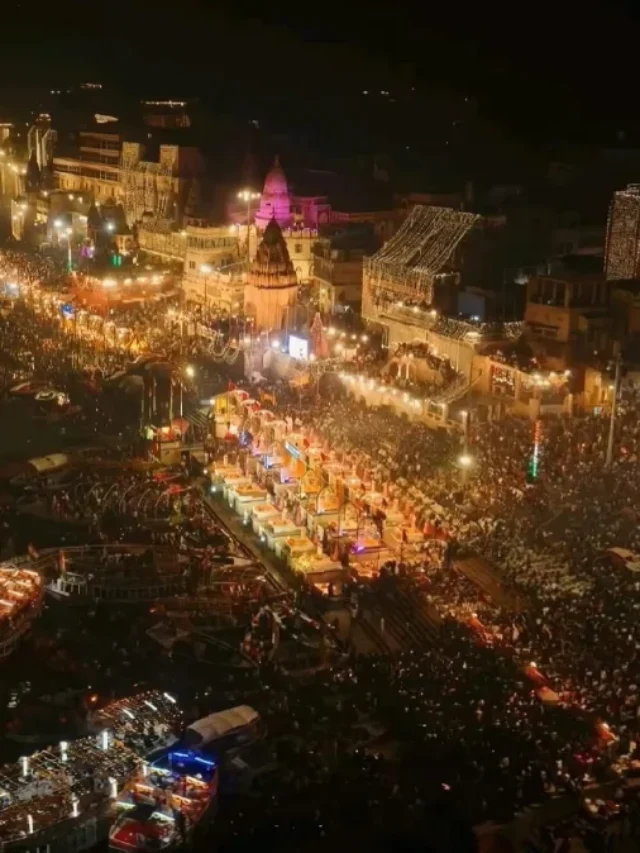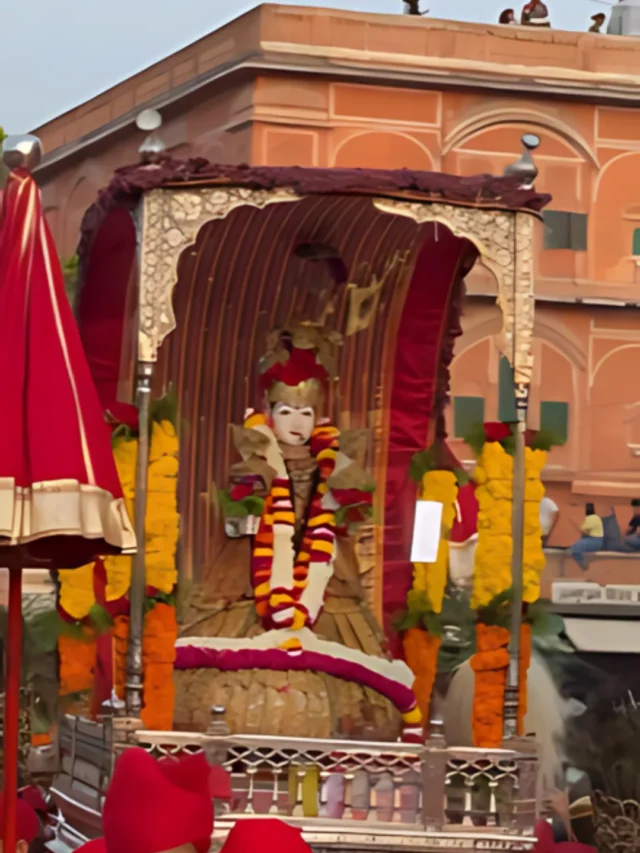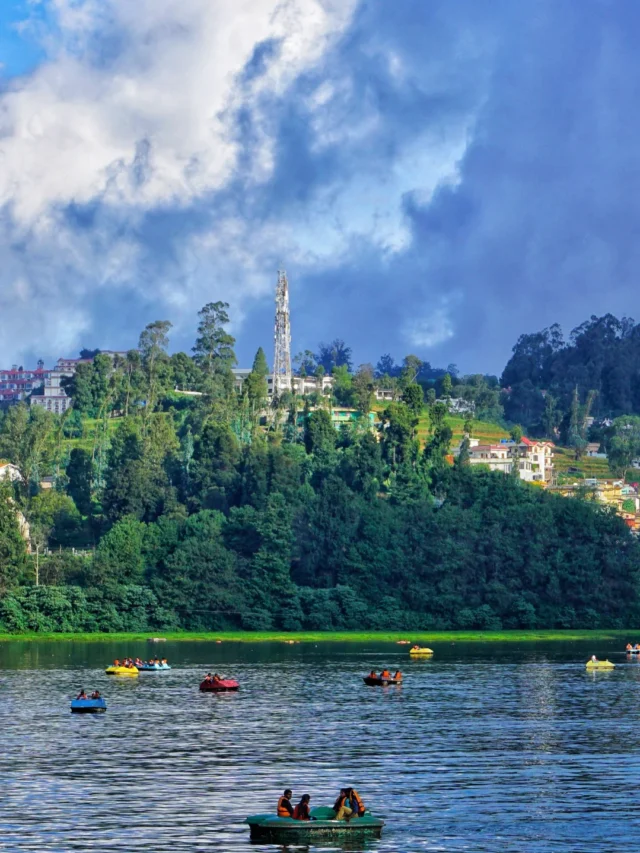Travellers are drawn to Karauli, which is tucked away in the centre of Rajasthan, by its alluring fusion of culture, history, and quirky appeal. Away from the well-traveled routes of well-known tourist spots, this hidden gem invites you to take a journey into the heart of rural Rajasthan. Every direction you turn as you stroll through the winding alleyways reveals stories from a bygone period, reflected in the magnificent buildings and lively marketplaces. Time appears to slow down in Karauli, providing a tranquil haven where you may fully immerse yourself in the genuine rhythms of the native way of life. Everything about Karauli is a brushstroke on a canvas of cultural richness, from the peace of old temples to the vivid colours of celebrations. Come along on this journey with us as we search for hidden gems and distil the spirit of Karauli, a place that offers more than simply a vacation—it’s a true cultural encounter.
Why Karauli is the Perfect Offbeat Destination
Karauli is an excellent alternative tourist option for anyone looking for a more peaceful and uncrowded vacation. In contrast to the busy tourist destinations of Rajasthan, including Jaipur and Udaipur, Karauli provides a break from the usual tourist throng, enabling tourists to take in its sights in a more leisurely manner.
The town’s rich cultural legacy is a major factor in its appeal. The architectural styles of Karauli’s ancient buildings, palaces, and temples are a distinctive fusion of Mughal and Rajput designs. Travellers may learn more about the history and customs of the area by visiting notable sites like the Kaila Devi Temple and the City Palace.
Karauli offers an authentic experience by giving a glimpse into traditional rural Rajasthani life. Visitors may engage in conversation with residents, observe customs, and learn about everyday living, offering a cultural immersion that is sometimes more difficult to get in more well-known tourist locations.
Karauli’s unconventional charm is enhanced by its natural beauty. The town is surrounded by aesthetically pleasing scenery that combines flora and dry terrain. Away from the busier tourist routes, exploring the surrounding hills and forests enables tourists to enjoy the area’s picturesque magnificence.
An important factor in Karauli’s attraction is its festivals and fairs. The vibrant local culture is on display at events like the Kaila Devi Fair, which draws both pilgrims and tourists. The vibrant and exciting environment created by these festivals enables guests to engage with and learn about the customs of the area.
The local food enhances Karauli’s quirky charm. Travellers may enjoy flavours that might be less commercialised than in more well-known locations by indulging in traditional Rajasthani cuisine with a local twist. Enjoy local delicacies and gastronomic specialities at the town’s restaurants.
Karauli offers several chances for photographers to capture its beauty. With its ancient buildings, lively marketplaces, and attractive surroundings, the town offers a charming setting for encapsulating Rajasthan’s spirit. Because there are fewer people around, photographers can concentrate on their work without being distracted by big groups of people.
Karauli’s unique attraction is essentially derived from its calm atmosphere, rich cultural legacy, and the chance to explore Rajasthan in a less commercialised and more genuine way. It calls to people looking for an off-the-beaten-path vacation experience that is more sedate and engaging.
Top Attractions in Karauli
1. Kaila Devi Temple
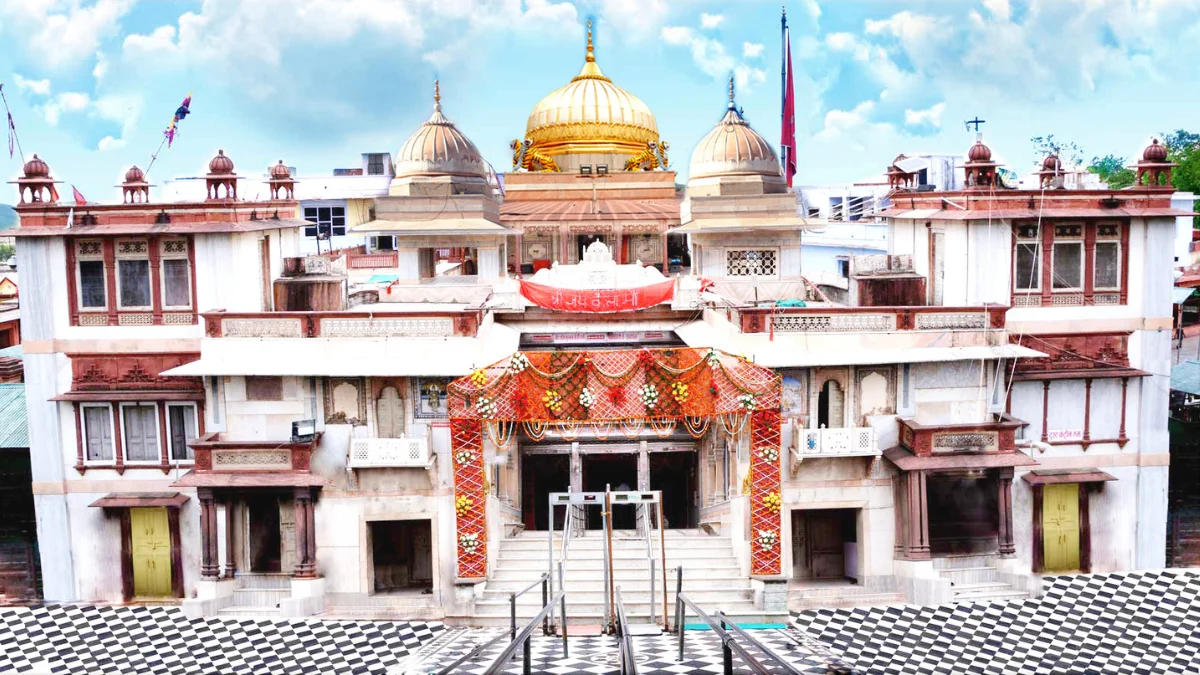
Situated on the outskirts, the Kaila Devi Temple is around twenty-five km away from Karauli. Located among the rolling hills of Trikut, this holy temple is believed to have been built about the year 1100 AD. It is situated on the banks of the Kalisal River. Treated with great reverence, the temple is one of the nine Shakti Peethas devoted to the goddess. Every year, during its two-week-long festival, pilgrims swarm to the Kaila Devi Temple, lured by the attraction of age-old customs and intense religious fervour. This serene hideaway, surrounded by stunning natural surroundings and rich in historical significance, provides an enthralling escape for anyone looking for a peaceful and spiritual combination in the heart of Rajasthan.
2. Madan Mohan Ji Temple
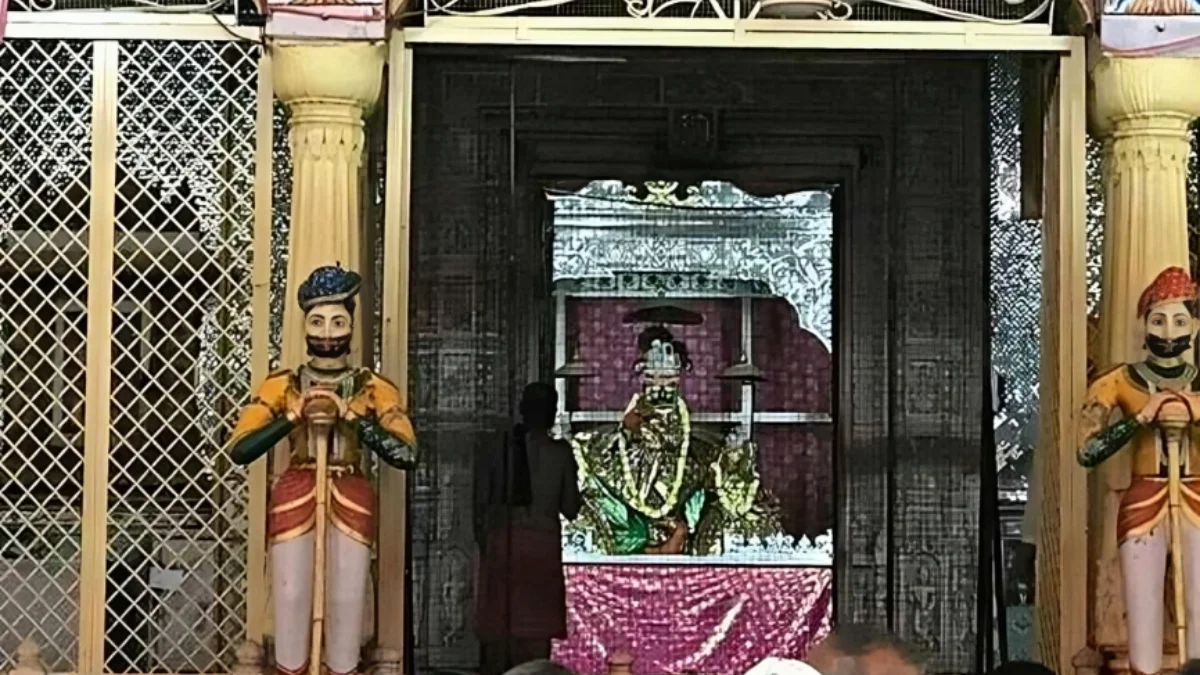
Lord Krishna, sometimes referred to as the heavenly lover, is honoured in Karauli’s venerable Madan Mohan temple. This historic location has been revered for ages and is held in high regard by both locals and tourists. The temple holds great historical significance since it is said that the previous monarchs found it to be very auspicious and attributed their military successes to its supernatural graces. The temple is adorned with elaborately carved statues of Lord Krishna and his wife Radha, which provide insight into the region’s rich creative legacy, all housed within its hallowed walls. The building, which is ornamented with the characteristic Karauli stone, shows the mediaeval beauty that contributes to the temple’s eternal attraction, while the atmosphere emanates an air of antiquity.
3. Mehandipur Balaji Temple
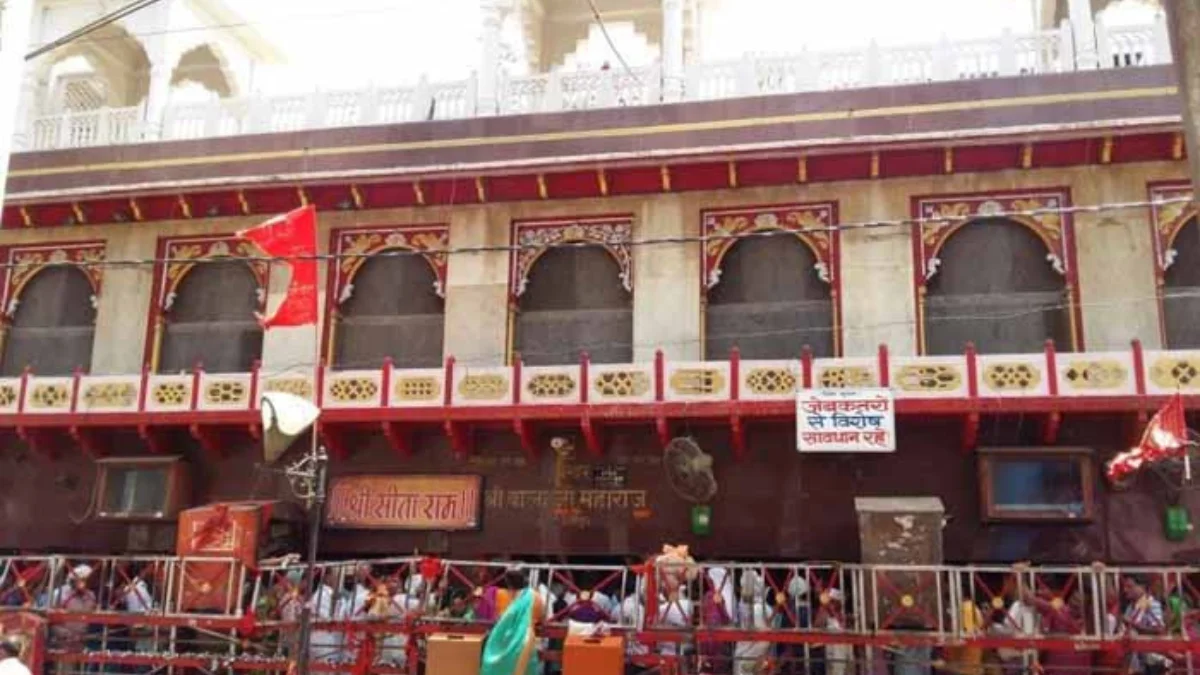
Located in the charming village of Mehandipur near Karauli, the Mehandipur Balaji Temple is a well-known shrine devoted to Lord Hanuman, the Monkey God. This hallowed location is well-known across the world for its distinctive emphasis on rituals of healing and ghost and evil spirit exorcism. The temple draws a great deal of foot traffic in part because of its ethereal atmosphere and reputation for dealing with paranormal events. Seekers and pilgrims from all over the world are drawn to the spiritual atmosphere in search of comfort and release from suffering. With its deep spiritual importance and centuries-old customs, the Mehandipur Balaji Temple is still a healing haven, resonating with the chants and prayers of those seeking divine intervention.
4. Shri Mahavir Ji Temple
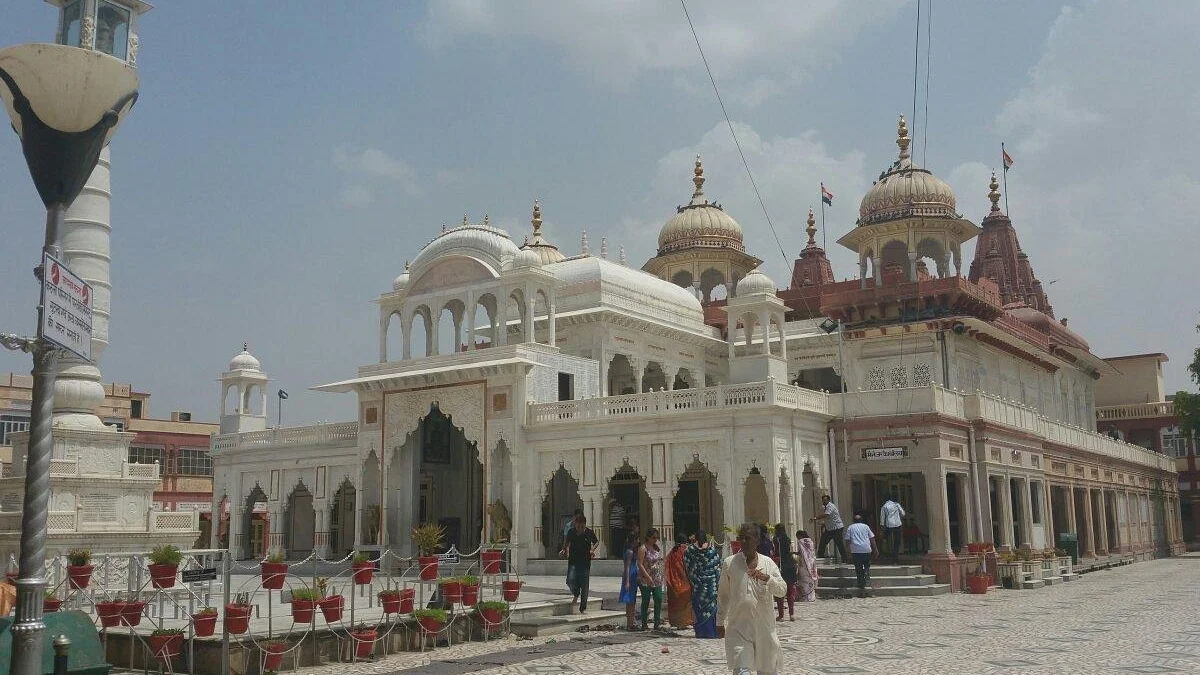
Honouring the Jain Tirthankars is the exquisite architectural masterpiece known as the Shri Mahavir Ji Temple. Renowned for its exquisite construction, sophisticated design, and magnificent art, this shrine is a popular pilgrimage site for Jains. The temple, which was built in the nineteenth century and represents the rich cultural and religious legacy of the area, is the epitome of Jain art. Every year, the Shri Mahavir Ji Temple comes alive with the energy of the Mahaveer Jayanti fair from the thirteenth day of the brilliant half of Chaitra to the first day of the dark half of Vaishakh. For both devotees and guests, this celebration adds a joyous atmosphere to the spiritual setting, making it an important and treasured occasion.
5. Bhanwar Vilas Palace
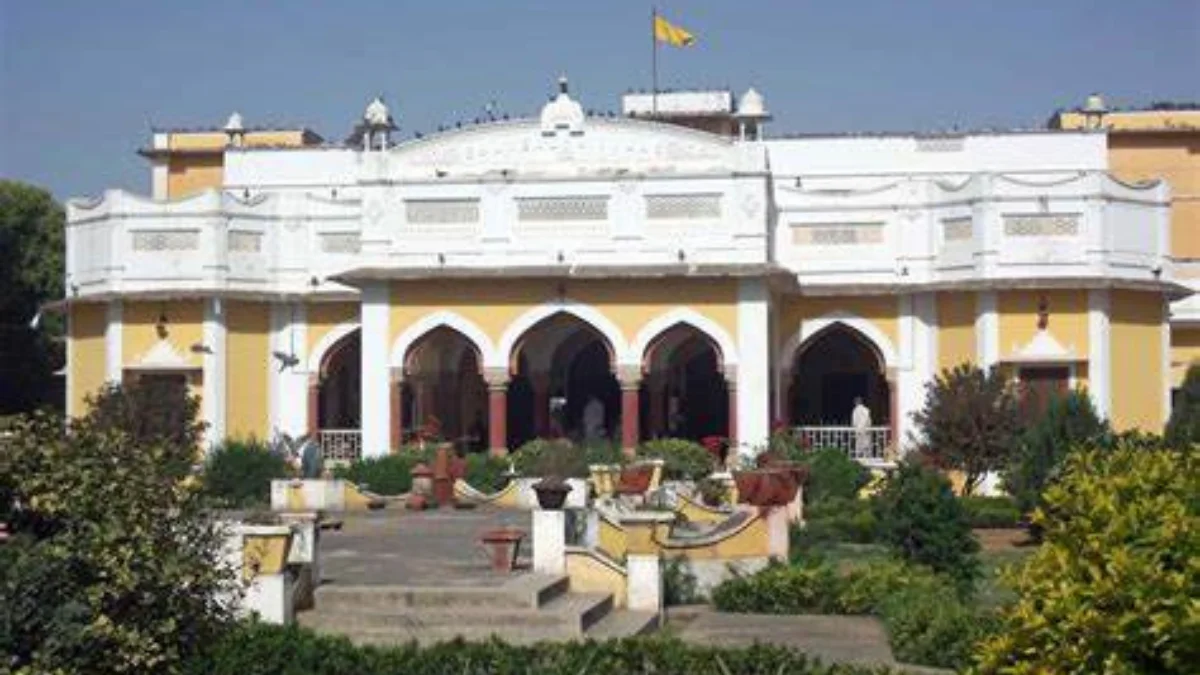
Built-in 1938 as the royal residence of Maharaja Ganesh Pal Deo Bahadur, Bhanwar Vilas Palace currently provides a distinct chance for visitors to get fully immersed in a royal experience. The palace has been turned into a heritage hotel and has maintained its historical allure by exhibiting colonial-style architecture that evokes the opulence of a bygone period. Antique furniture adorns the vast rooms, lending an air of luxury and nostalgia. When visiting Bhanwar Vilas Palace, visitors may experience a trip down memory lane and savour the grace of a royal lifestyle, all while making use of the contemporary amenities that have been tastefully incorporated into this magnificent home. It’s an invitation to experience the opulent atmosphere and lengthy history of a palace that has seen decades of imperial grandeur.
6. Gomtidham
Famous for the ashram of Sant Gomti Das Ji, Gomti Dham is a peaceful sanctuary surrounded by thick forests and set against the backdrop of Sagar Talab and Timangarh fort. A symbol of serenity and calm is the ashram, a spiritual retreat. Encircled by the abundance of nature, Gomti Dham provides a much-needed escape from daily life. The saint’s residence, the placid waters of Sagar Talab, and the ancient Timangarh fort come together to create an exquisite haven where guests may lose themselves in tranquillity. Gomti Dham beckons as the perfect vacation for anybody looking to escape the grind; it’s a location where one may find comfort in the natural beauty and the spiritual energy of Sant Gomti Das Ji’s ashram.
7. City Palace
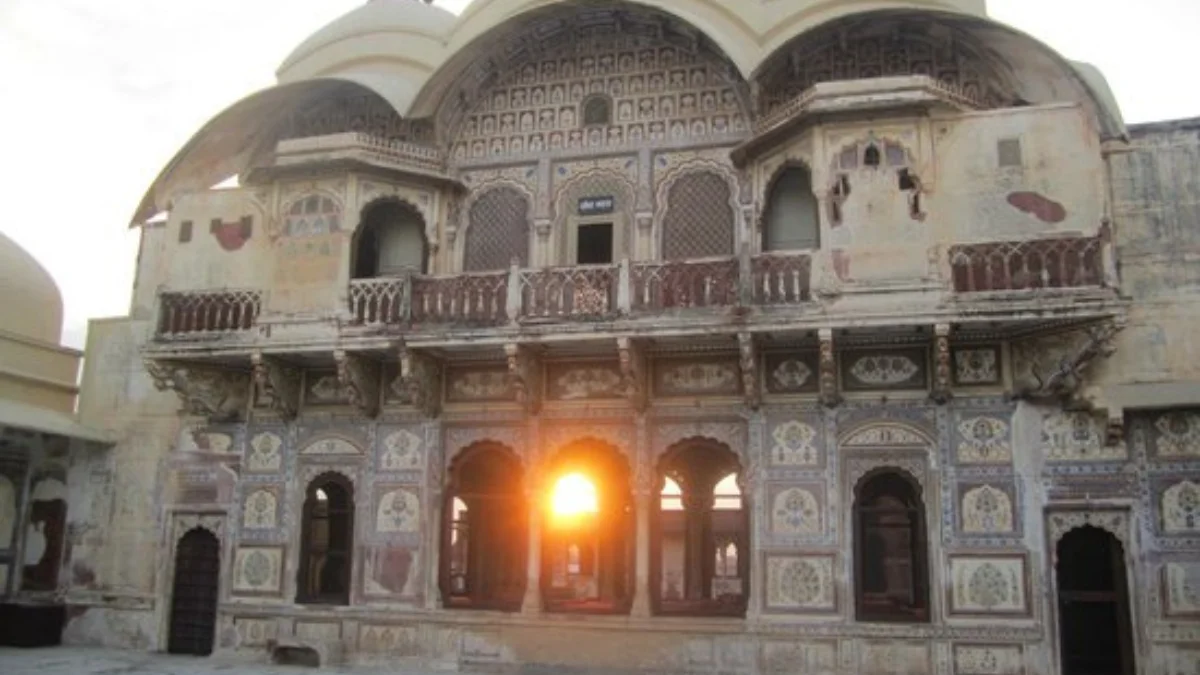
Originally built by Arjun Pal, Karauli’s imposing City Palace dates back to the fourteenth century. Raja Gopal Singh built the imposing building that remains in the eighteenth century today. This historic structure is a veritable gold mine of colonial architecture, complete with ornate stone carvings, lattice-work windows, and an exquisite royal framework with sumptuous murals. The palace is a vivid rainbow of hues, with red, white, and off-white being the most prominent colour schemes. The terrace’s expansive view, which provides an amazing vantage point to see the entire town spread out along the charming banks of the River Bhadrawati, is the real attraction, though.
8. Raja Gopal Singh Chhatri
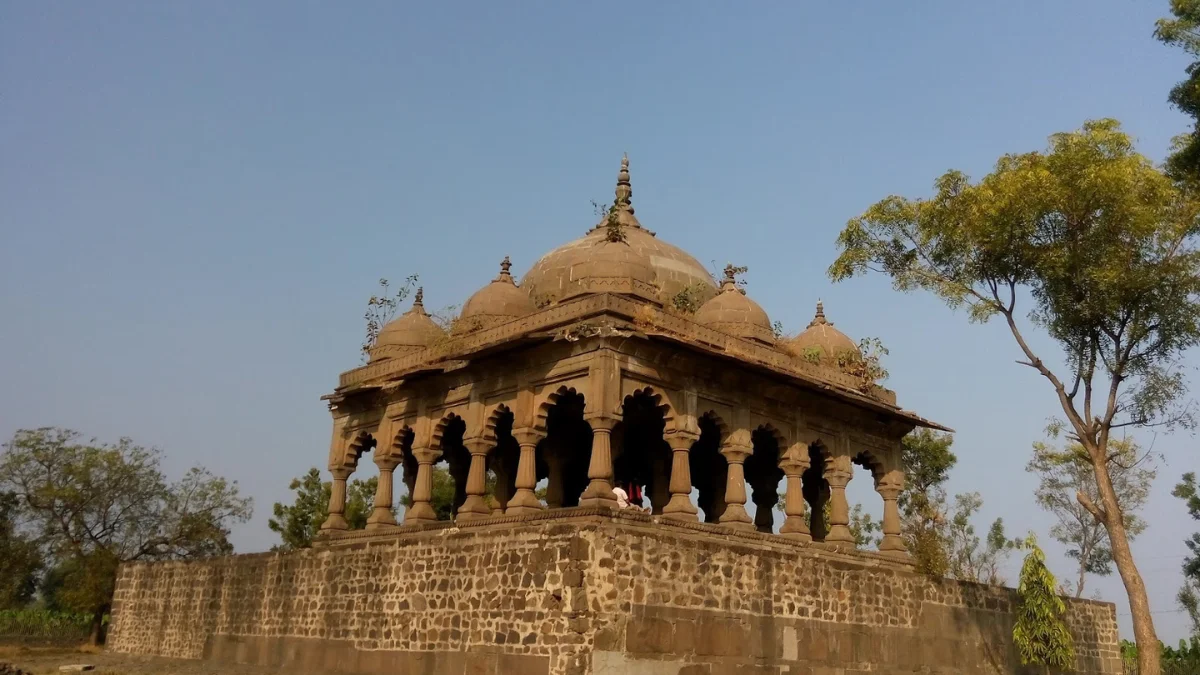
The Chattri of Raja Gopal Singh is a fascinating location adorned with beautiful fresco paintings. It is located immediately before the Nadi Gate that leads from the palace to the river. This historical site is particularly significant since it is linked to Dayanand Saraswati, the Arya Samaj’s founder and reformer, who is reported to have given a speech at Raja Gopal Singh’s Chhatri. Many pilgrims from the surrounding area and other states, such as Madhya Pradesh, come to the location to honour this sacred landmark, crossing the Chambal River in the process. The Chattri invites tourists to delve into Karauli’s spiritual and artistic heritage while serving as a monument to the city’s rich cultural and historical heritage.
9. Timangarh
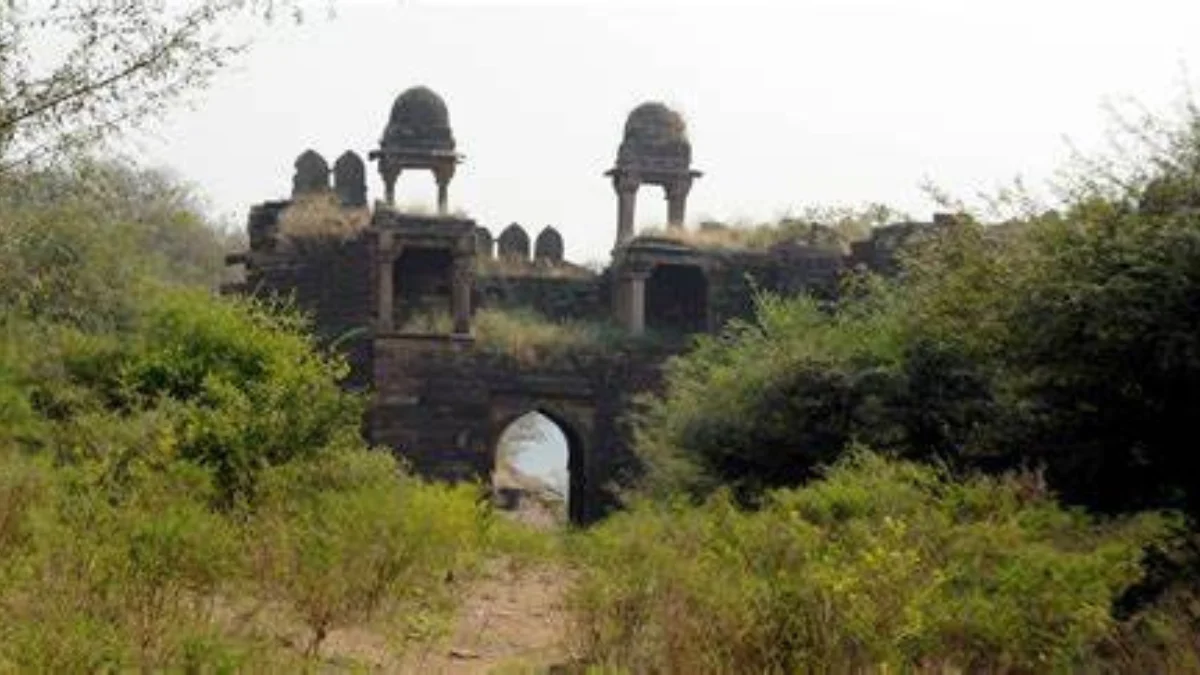
Standing majestically 40 kilometres from Karauli, the Timangarh Fort was constructed in 1100 AD and named after King Timanpal. After being severely damaged by invasions, King Timanpal of Banaya rebuilt it in 1058 AD. The fort’s construction is reminiscent of India’s past royal era and features a rare collection of ancient ashtadathu (eight metals). Mythological gods are portrayed on the stone pillars that hold up the fort. After enduring several changes, the fort rose to prominence when Akbar gave it to his mansabdar, closing a chapter in its legendary history. India’s rich history and unwavering resiliency are once again captivatingly demonstrated by Timangarh Fort.
10. Mandrayal
Situated forty kilometres away from the central district, Mandrayal is strategically significant in Karauli, acting as a junction between Madhya Pradesh and Rajasthan. At this important location, Maharaja Harbaksh Pal later built a new garrison fort called Bala Kila. Mandrayal’s architectural projects and dynamic power transfers are reflected in its historical setting, which adds to the town’s historical relevance in the Karauli area.
11. Dev Giri Fort and Utgir
Built by the powerful Lodha warriors, Utgir lies atop a triangular Aravallis mountain. The Devgiri Fort lies tucked away between Khandar and Karanpur amid the Chambal River’s canyons. Raja Arjun Deo is said to have claimed possession of the Utgir Fort, which the Yaduvanshi monarchs used as their capital until Gopal Das constructed the Bahadurpur Fort. Over time, the Utgir Fort supported the Karauli dynasty as an emergency garrison bastion. However, this key castle underwent a historical transformation when Rajasthan was formed as a result of state unification.
12. Gufa Temple
Aptly named for its setting in the thick forests of Ranthambore, the Gufa Temple is a remarkable cave temple said to be Kaila Devi’s original shrine. Devotees travel eight to ten km despite its great location in order to have darshan from the god. On the other hand, people, international and local, are cautioned not to enter the open woodland region. A sense of reverence and adventure are added to the journey by the temple’s spiritual importance and its remote, natural surroundings, which create a magical atmosphere that appeals to the devotees who go to this holy Gufa Temple.
13. Gadhmora
Gadhmora, which dates back to the time of Lord Krishna, is among the oldest settlements in Rajasthan. The settlement, which bears Raja Mor Dhwaj’s name, is steeped in history. Another notable feature of Gadhmora is a large pond, or Kund, around which a yearly fair is held during Sankranti. Visitors are drawn to this old hamlet to take part in the festivals and enjoy the historical charm that permeates the region of Gadhmora. With its deep-rooted history and cultural customs, it gives a glimpse into the timeless legacy of Rajasthan.
Best Time to Visit Karauli
The winter months of October through March are the ideal times to visit Karauli. The weather is often nice during this time of year, with cool temps that are ideal for outdoor activities and sightseeing.
In Rajasthan, winter is a joyous time of year, and you can get to see and take part in regional celebrations and activities. It’s more pleasant to see the historical monuments, temples, and other attractions in and around Karauli because of the colder temperature.
How to Reach Karauli
Sanganer Airport in Jaipur is the closest airport for travellers going to Karauli; it’s around 170 km distant. The town has good road access to Rajasthan’s larger and smaller cities and towns as well as other parts of India.
The road system makes it easy to go to and from Karauli and guarantees that a number of locations are reachable. In addition, Hindaun City and Gangapur railway stations provide train access to the town. These stations are essential for connecting Karauli to other regions of the nation. They are situated on the wide gauge of the Northern Western Railway line and the main route that connects Delhi and Kota, respectively. Visitors to Karauli can choose from a variety of modes of transportation to get around this historically and culturally significant location, including air, land, and train travel.
Conclusion
Karauli is a hidden gem in Rajasthan, often called the ‘Land of Red Sandstone’ that you must visit if you want a peaceful trip. Pack your bags and head out to Karauli!


